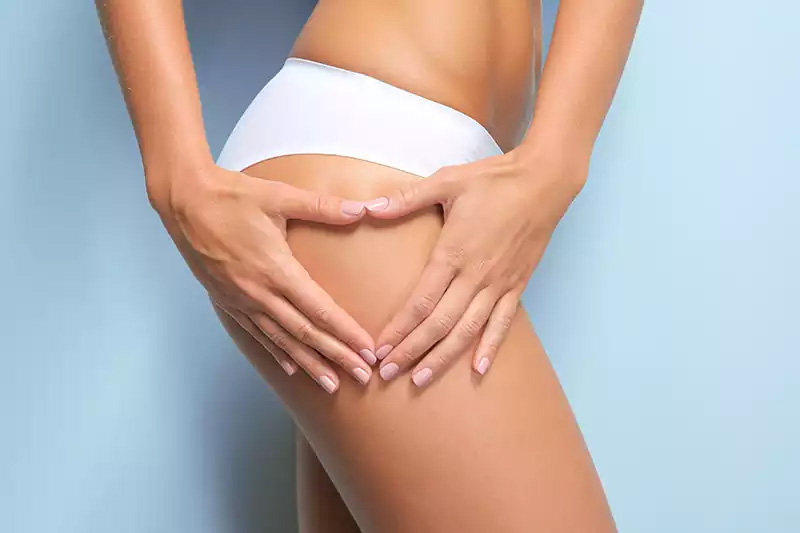Cellulite and its causes
Cellulite is a prevalent, harmless skin condition that causes lumpy, dimpled flesh on the thighs, hips, buttocks, and abdomen. The condition is most prevalent among women.
Many people try, with varying success, to improve the appearance of their skin through, exercise, weight loss, massage and creams marketed as a solution to cellulite. Medically proven treatment options are also available, although the results are not immediate or long-lasting.
Symptoms
Cellulite has the appearance of dimpled or bumpy skin. Sometimes it is described as having a texture of cottage cheese or orange peel.
You can only see mild cellulite if you pinch your skin in an area where you have cellulite, such as your thighs. More severe cellulite causes the skin to appear rumpled and bumpy with valleys and peaks.
Cellulite is generally common around the thighs and buttocks, but it can also happen in the breasts, lower abdomen, and upper arms.
Causes
An exact cause of cellulite is not known. It involves the fibrous connective cords that tether the skin to the underlying muscle, with the fat lying between them. As fat cells build up, they push up against the skin, while the long, hard cords pull down. It creates an uneven surface or a dimpling.
Hormonal factors play a significant role in the development of cellulite, and genetics determine the structure and texture of the skin and the type of the body. Other factors, like weight and muscle tone, affect whether one has cellulite, although very fit people may have it.
Treatment
A variety of treatments are available, at least temporarily, to improve the appearance of cellulite. Each one has its own set of potential outcomes and side effects. Some studies suggest that a combination of treatments may produce the most satisfactory results.
Laser and radiofrequency treatment: Various laser wounding treatments are available for the treatment of cellulite. In one of the methods, a thin fibre is slipped under the skin to deliver the laser heat that destroys the fibrous bands that bind the fat. This approach has shown that the appearance of cellulite has been reduced to one year for six months. Further study is required.
There is also a device that uses heat (radiofrequency) for non-ablative treatment that improves the appearance of the skin. A person will probably need a few sessions before they notice an improvement in the appearance of your skin. Non-ablative treatments usually need to be repeated more often than ablative treatments.
Cryopolysis: With Cryopolysis (CoolSculpting), the fat below the skin is reduced by a device that uses vacuum suction to bring the tissue into contact with the cooling plate. A person will need multiple treatments. The results will appear gradually over two to three months.
Acoustic wave therapy: With this technique, the technician applies gel to the affected skin and runs a small, hand-held device (transducer) across the area. The transducer sends sound waves to the body, breaking up the cellulite. A person will probably require a few sessions before you notice an improvement in the appearance of your skin.
Surgery: The doctor may offer one of the different procedures that use blades, needles or other specific tools to separate the fibrous bands under the skin, to smoothen the skin. One method also uses fat grafting to enhance the appearance of the skin. The results of these techniques can last for about three years.
Complexities of these techniques may include pain and bleeding under the skin.
Tips on cellulite removal and prevention
- Eating a healthy diet and doing regular exercise is a reasonable approach to keep the body as taut and smooth as possible.
- Patients should be cautious before opting for dietary supplements, surgical procedures, or elaborate techniques that have unproven value.
- Patients must receive these costly and time-consuming treatments regularly to maintain any effect.





